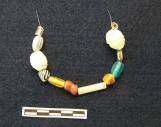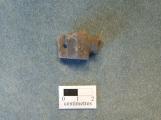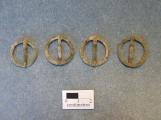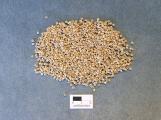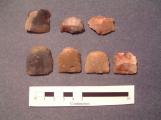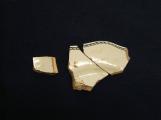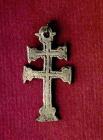1
Although European contact with native peoples around the Great Lakes began in the early 16th century, trading seems to have been minimal until the end of the century, when furs became a viable commodity. It was then that the King of France authorized the colonization of New France in an effort to monopolize the fur trade. Count Frontenac sought to control the profitable trade taking place in the Great Lakes Basin and Canadian Shield by directing all furs to the Montreal market, so in 1673 he established the first European settlement in the area that is now Kingston, Ontario.French Fort Frontenac was both a fort and a trading post, built hurriedly in a strategic location at the intersection of the Cataraqui River and the St. Lawrence River. While it is unclear whether the fort's primary function was as a trading post or as a stronghold to control the Iroquois, it served many pruposes: it was certainly a centre for trade and a military base, but it also served as a religious mission and to provide settlement opportunities in the western reaches of New France.
When Robert Cavelier, Sieur de La Salle was granted control of the fort and surrounding lands in 1675, the hastily built fort was already in need of repair. Cavelier wasted no time and immediately undertook to replace the deteriorating structures. In keeping with the fort's multifaceted role, by 1685 a complex of buildings had developed within the fort to serve the needs of the garrison, traders, habitants, and native people living and trading at the post, further establishing a French presence in the area.
Despite a promising beginning, the fort maintained a tenuous existence on the hostile frontier. Continued conflict with the Iroquois and a shaky financial commitment from the French crown contributed to the fort's uncertain future. In 1688 the Iroquois attacked the garrison, and the fort was abandoned in 1689. It was not until 1695 that the garrison was re-established, but by the start of the 18th century, the fort's military role had declined and it was functioning primarily as an entrepôt for local and long distance trade. As a base for commercial rather than military ventures, the fortification continued to suffer from neglect.
In the 1740s, frontier expansion brought about increased tension between the French and the British, and the military shortcomings of Fort Frontenac became the focus of attention. The French attempted to remedy the situation by increasing the size of the garrison, installing gun platforms on the ramparts and adding new barracks. Nevertheless, the area in which the fort was situated had become a bastion of British loyalty by the mid 18th century, and in 1758 Lieutenant Colonel John Bradstreet led a combined force of British regulars and American Colonial troops in an attack on the fort, which fell into British hands.
The post was abandoned for 25 years before the British reoccupied it in 1783, when the area was chosen as a site for Loyalist settlement after the American Revolutionary War. A variety of new constructions during the British period slowly eradicated evidence of French rule in the area. Demolition of the last remnants of the French fort occurred around 1832.
During the British occupation of Fort Frontenac, hundreds of enlisted men and officers from many British regiments spent time living and working in the area.
Fort Frontenac played a key role in the European settlement of the Kingston area prompting a serious attempt to conduct archaeological investigations of the fort in 1982. This led to a massive project that spanned long field seasons between 1983 and 1985 and has been followed by other ongoing investigations relating to infrastructure upgrades and new developments and continued exploration at Fort Frontenac. While there are few visible remains of the structure, the legacy left by the French is evidenced in small details such as street and building names. The remains of Fort Frontenac stand as a testament to the French hertitage and influence in Kingston's beginnings as a fur trading post.
Excerpted from:
Bazely, Susan M. Fort Frontenac A French Stronghold on the Great Lakes. Cataraqui Archaeological Research Foundation 2007.
Bazely, Susan M. Fort Frontenac Bastion of the British. Cataraqui Archaeological Research Foundation 2007.
5
Fort Frontenac, circa. 1740 (Artist's Impression circa. 1950)1740
Fort Frontenac, Kingston, Ontario, Canada
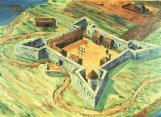 Credits:
Credits:Fort Frontenac, Department of National Defence Canada
6
1685 plan of French Fort Frontenac1685
Fort Frontenac, Kingston, Ontario, Canada
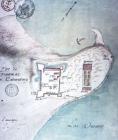 Credits:
Credits:National Map Collection 4755
7
La Salle Inspecting the Construction of Fort Frontenac, by D. Kelly1676
Fort Frontenac, Kingston, Ontario, Canada
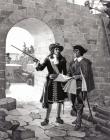 Credits:
Credits:Library and Archives Canada C-7962
12
Iron Trade Axe In SituLate 17th Century to Mid 18th Century
Fort Frontenac, Kingston, Ontario, Canada

13
One of Three Iron Spears Likely Forged at Fort FrontenacLate 17th Century to Mid 18th Century
Fort Frontenac, Kingston, Ontario, Canada
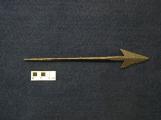
14
Glass Trade Beads of European ManufactureLate 17th Century to Mid 18th Century
Fort Frontenac, Kingston, Ontario, Canada
